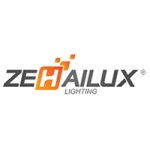Table of Contents Hide
- 1 Illuminating gardens with sustainable elegance
- 2 Unleashing the power of the sun
- 3 Solar technology transforms LED garden lights
- 4 LED technology powers sustainable solar garden lights
- 5 Solar garden lights: a symphony of design, engineering, and technology
- 6 System configuration
- 7 Solar panels
- 8 Rechargeable battery
- 9 LED light engine
- 10 Solar charge controller
- 11 Types of solar garden lights

Illuminating gardens with sustainable elegance
Solar garden lights are designed to enhance the aesthetics and functionality of outdoor spaces. They are specifically crafted for use in gardens with the dual purpose of improving the visual appeal of the outdoor environment and providing practical illumination. Solar garden lights utilize the power of the sun, a renewable and sustainable energy source. The use of these lights takes landscape lighting to a new level by combining innovative technology, sustainability, aesthetic enhancement, and practical benefits. Solar garden lights represent a modern and eco-friendly approach to outdoor illumination, offering users an opportunity to enhance the beauty and functionality of their gardens and landscapes while embracing energy-efficient and sustainable practices.Unleashing the power of the sun
Advancements in solar technology are unlocking a new era of innovation in landscape lighting. These developments encompass improved efficiency, enhanced energy storage, smart controls, durability, innovative designs, affordability, and the integration of solar technology with other emerging technologies. The improved efficiency of solar panels contributes to extending the operating hours of solar-powered lights. By maximizing energy capture, these lights can potentially remain illuminated for longer durations during the night, providing extended lighting coverage. Whether in regions with varying sunlight intensities, climates with frequent cloud cover, or during seasons with less daylight, these lights can still operate effectively due to their enhanced ability to capture sunlight. Innovations in energy storage, such as high-capacity batteries and improved energy management systems, enhance the ability of solar lights to store and utilize energy effectively. This ensures reliable illumination during periods of reduced sunlight or at night.Solar technology transforms LED garden lights
The use of solar technology expands the possibilities of what LED garden lights can achieve. This independence of electrical grids allows for more flexible placement and eliminates the need for wiring, enabling creative and versatile designs in garden lighting. Solar technology is influencing the design of solar lights. The elimination of the need for electrical wiring opens up new possibilities in terms of design and placement. Solar garden lights with various shapes, sizes, and styles are now available, allowing users to choose lighting solutions that complement the design of their outdoor spaces. LED garden lights can be installed in various locations within a garden, regardless of proximity to electrical outlets. Solar-powered LED garden lights can often include advanced features such as automatic on/off sensors, motion detection, and programmable settings. This adds functionality and convenience to outdoor lighting. The incorporation of solar technology into LED garden lights has expanded the potential applications and features of these lights. The technology enhances energy efficiency, design flexibility, and overall functionality, offering a broader range of possibilities for illuminating outdoor spaces.LED technology powers sustainable solar garden lights
LED technology is integral to the value proposition of solar garden lights due to its energy efficiency, low power consumption, long lifespan, durability, directional light output, color options, design flexibility, and compatibility with solar power systems. The adoption of LED technology enhances the performance, reliability, and versatility of solar garden lights, making them a practical and efficient choice for outdoor lighting applications. LEDs have low power requirements, allowing solar garden lights to operate for longer durations using the energy stored in their batteries. This is particularly important in solar lighting applications, where efficient energy use is essential for extended operation during the night. The durability and longevity of LEDs contribute to the overall longevity of solar garden lights. This long lifespan reduces the need for frequent replacements, making solar garden lights a more sustainable and cost-effective lighting solution. The inherent durability of solid state lighting makes LED-based solar garden lights more robust and resistant to vibrations or impacts, ensuring reliable performance in outdoor environments. The directional nature of LED light output enables focused illumination, preventing unnecessary light spillage and maximizing the efficiency of solar garden lights. LED technology offers a wide range of color options, allowing for versatile design choices in solar garden lights. Whether warm white for ambient lighting or RGB (Red, Green, Blue) for decorative effects, LEDs provide flexibility in creating various lighting atmospheres and aesthetics.Solar garden lights: a symphony of design, engineering, and technology
The essentials of good solar garden lighting emerge from a cohesive and synergistic dialogue between design, engineering, and technology. System design plays a critical role in solar garden lighting as it determines the aesthetic, functional, and ergonomic aspects of the lights. The engineering aspect ensures that solar garden lights are not only aesthetically pleasing but also durable, reliable, and effective in harnessing and utilizing solar power. Technology, particularly solar and LED technologies, is at the heart of efficient solar garden lighting. An integrated approach considers the interplay between form and function, resulting in solar garden lights that not only look good but also perform optimally in capturing, storing, and utilizing solar energy for effective illumination. Visual appeal is a crucial aspect of landscape lighting, contributing to the overall ambiance and aesthetics of the outdoor space. The form of solar garden lights includes considerations such as the design, shape, color, and placement of the fixtures. Functionality in solar garden lights involves their ability to capture, store, and efficiently use solar energy to provide effective illumination. This includes the efficiency of solar panels in converting sunlight into electricity, the capacity and longevity of the energy storage system (batteries), and the performance of LED technology in delivering bright and reliable light output.
System configuration
A solar garden light is a complex system comprising various interdependent components working together for its proper functioning. Each of these sub-systems plays a specific role, and their collaboration is essential for the effective operation of the solar garden light. The solar panel system consists of photovoltaic cells that capture sunlight and convert it into electrical energy. This system is responsible for harvesting solar power, a renewable energy source, to be used to illuminate the garden light. The battery system stores the electrical energy generated by the solar panel during daylight hours. This stored energy is then utilized during the night or periods of low sunlight to power the light source. The battery system ensures a continuous and reliable power supply. The LED light engine of a solar garden light is a critical component responsible for converting electrical energy into visible light. The solar charge controller manages the charging process of the battery. It regulates the flow of electrical energy from the solar panel to the battery, preventing overcharging and deep discharging. The charge controller ensures the optimal performance and longevity of the battery. The housing and enclosure protect the internal components from environmental elements such as rain, snow, and UV exposure. This ensures the durability and longevity of the solar garden light, allowing it to withstand various weather conditions.Solar panels
A solar panel in a solar garden light serves as the key component responsible for capturing sunlight and converting it into electrical energy through a process known as photovoltaics. The types of solar panels used in solar garden lights can significantly impact their applications, affecting factors such as efficiency, space requirements, aesthetics, and cost. Monocrystalline solar panels are made from single-crystal silicon and are known for high efficiency. These panels are commonly used in high-end or premium solar garden lights where efficiency is prioritized over cost. Polycrystalline solar panels use multiple silicon crystals and offer a balance of efficiency and cost-effectiveness. These panels are suited for applications where slightly lower efficiency is acceptable, and cost is a critical factor. Thin-film solar panels use thin semiconductor layers and are often more flexible. These panels can be integrated into various surfaces, allowing for creative and adaptable solar garden light designs.Rechargeable battery
Rechargeable batteries used in solar garden lights are typically designed to be compact and lightweight. This allows for the creation of sleek and aesthetically pleasing light fixtures without the need for bulky power sources. The batteries are integrated into the overall design of the garden lights in a way that enhances the visual appeal of the fixtures. They are often concealed within the light housing, contributing to a clean and uncluttered appearance. The rechargeable batteries contribute to the autonomy of solar garden lights, allowing them to operate independently of the grid. This enhances energy efficiency by utilizing solar power stored during daylight hours rather than relying on external power sources. The integration of efficient and aesthetically designed batteries contributes to the overall success and popularity of solar garden lights in enhancing outdoor spaces.Different types of rechargeable batteries may be used in solar garden lights, each with its own characteristics. Common types include Nickel-Metal Hydride (NiMH), Lithium-Ion (Li-Ion), Lithium Iron Phosphate (LiFePO4), and others. The choice of rechargeable battery for solar garden lights involves a careful consideration of various factors, including cost, energy density, cycle life, and specific system requirements. Li-Ion batteries are popular for their high energy density, lightweight design, and longer cycle life compared to NiMH and NiCd batteries. They offer excellent performance, are compact, and have a low self-discharge rate. However, they may be more expensive than other options. LiFePO4 batteries are a specific type of lithium-ion battery known for their stability, safety, and long cycle life. They are considered more environmentally friendly, have a high energy density, and are well-suited for solar applications due to their stable voltage characteristics. NiMH batteries are known for their moderate energy density, relatively low self-discharge rates, and a good balance between cost and performance. The selection of a specific rechargeable battery type involves a trade-off between these factors, and the choice is made based on the unique requirements and priorities of the solar lighting application. Advances in battery technology continue to bring about improvements in efficiency, energy density, and overall performance, contributing to more reliable and sustainable solar-powered garden lighting solutions.
LED light engine
The LED light engine of a solar garden light is a sophisticated system that efficiently converts solar energy into visible light, incorporates control mechanisms for optimal performance, and ensures the reliability and longevity of the lighting system. The LED array is a critical component responsible for producing visible light, and its design impacts the overall efficiency, light output, and distribution of light in the solar garden light. The configuration of an LED array depends on factors such as the desired light distribution and overall design of the fixture. LED arrays can be designed with different color options, allowing for white light or color-changing effects depending on the application and user preferences. The LED array is mounted on a heat sink which dissipates any generated heat, ensuring the longevity of the LEDs. Solar garden lights often incorporate lenses or reflectors as part of the LED light engine. These components control the direction and distribution of light, helping achieve specific lighting patterns or effects. Solar garden lights often incorporate lenses or reflectors as part of the LED light engine. These optical components control the direction and distribution of light.The LED light engine includes a control circuit that regulates the power supplied to the LEDs. This integrated circuitry may go beyond basic lighting functionality, introducing features that enhance the adaptability and customization of the lighting system. Dimming is a feature that enables users to tailor the illumination level based on their preferences or specific lighting requirements. RGB color mixing allows users to customize the color of the light emitted by the solar garden light, offering a dynamic and visually appealing lighting experience. Integration of daylight sensors and motion sensors enhances energy efficiency by ensuring the light is only activated when needed.
Solar charge controller
Solar charge controllers are essential components of solar garden lights, as they regulate the charging and discharging of batteries, ensuring optimal performance and longevity. There are mainly two types of solar charge controllers commonly used in solar garden lights. MPPT (Maximum Power Point Tracking) charge controllers maximize the efficiency of the solar panel by dynamically adjusting the electrical operating point to extract the maximum power available from the panel. They constantly track and adjust the electrical operating point of the solar panel to ensure that it operates at its maximum power point, even when environmental conditions change. PWM (Pulse Width Modulation) charge controllers modulate the charging current to the battery by rapidly switching between the fully charged state and a state where the solar panel is connected to the battery, allowing a series of pulses to control the charging process.The choice between PWM and MPPT solar charge controllers for solar garden lights depends on factors such as system size, battery type, and environmental conditions. PWM controllers are not as efficient as MPPT controllers in extracting power from the solar panel, especially in situations with varying light conditions. They are straightforward in design and operation, which makes them easy to install and maintain. PWM controllers are generally more affordable than MPPT controllers, making them suitable for smaller solar systems or those with budget constraints. MPPT controllers operate more efficiently and offer more flexibility and are compatible with various battery types. But they are more complex in design and operation, requiring a more sophisticated installation process. This complexity may also mean a higher likelihood of electronic failure.
Types of solar garden lights
Solar garden lights are often integrated into the landscape design to complement existing elements such as plants, hardscape features, or architectural structures. Their design takes into account the overall theme and style of the garden, ensuring seamless integration. These fixtures come in various shapes, sizes, and styles, catering to different preferences and design aesthetics.Pathway lights are a popular design choice for solar garden lighting. They are designed to line pathways, walkways, or driveways, providing both practical illumination for safety and a decorative element that defines the pathway. Solar spotlights are usually mounted on stakes that can be easily inserted into the ground. They are versatile and can be used to highlight specific areas or create visual interest in flowerbeds and garden borders. Wall-mounted solar lights are installed on exterior walls, fences, or pillars. They contribute to the overall ambient lighting and can highlight architectural features. Solar bollard lights are tall, vertical fixtures often used to define boundaries or pathways. Solar well lights are designed to be installed in the ground, providing a flush and unobtrusive appearance. Solar garden lights also come in the form of string lights. These are strands of lights connected by a flexible wire, allowing for creative and decorative arrangements. Some solar garden lights are designed in the form of figurative or ornamental elements, such as animal shapes, flowers, or abstract sculptures. These fixtures add a playful or artistic dimension to the garden.
Whether illuminating pathways, flowerbeds, or specific garden features, their thoughtful integration into the landscape design and provision of both aesthetic and functional benefits make them a valuable addition to outdoor environments.















